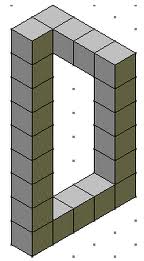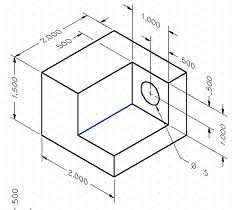Isometric vs. Axonometric
The names for these types of three-dimensional drawing are often used interchangeably, which is somewhat correct because in fact one is a subset of the other, so what’s the difference?

Axonometric
In this corner: an axonometric projection is a type of orthographic projection where a three-dimensional object is depicted at a skewed angle so that more than one side of the object can be seen. An orthographic projection typically shows one face of the object parallel to the surface of the page while an axonometric drawing is rotated so that the plane of the object is NOT parallel to the page. Axonometric means “to measure along axes”; the axes of the object are drawn at a consistent scale. The scales of the different axes may differ from each other however and that is where the subsets of isometric, dimetric and trimetric come in.

Isometric
And in this corner: an isometric projection is a type of axonometric projection where the same scale is used for each axis and thus it is the most commonly used drawing type. In a dimetric projection only two axes use the same scale while the third (usually the vertical axis) is determined separately. In a trimetric projection all three axes use a different scale creating a very distorted image.

Because the isometric projection is not a true perspective (that is, objects do not appear larger or smaller as they become nearer to or further from us), drawings of large scale objects can appear distorted to our eyes and, interestingly, drawing depth can be difficult if not impossible to determine. Artists have used this phenomenon to create illusions such as M.C.Escher’s impossible object drawings. The fact that illusions like this are only possible because of the process of 2-D projection makes real-world interpretations of those illusions difficult to make… but not impossible!
Bonus match: that vs. which
The short answer is “that” should be used to introduce a restrictive clause while “which” should be used to introduce a parenthetical clause. What? Use “that” when you are giving information that is essential to understanding and “which” when the information is more of an aside. For example, cars that have a low ceiling are hard for me to drive. “Have a low ceiling” is essential to the sentence’s meaning (the sentence means something else completely if that chunk comes out) so it gets a “that”. As another example, the BCS system, which is ridiculous, is mercifully coming to end.







